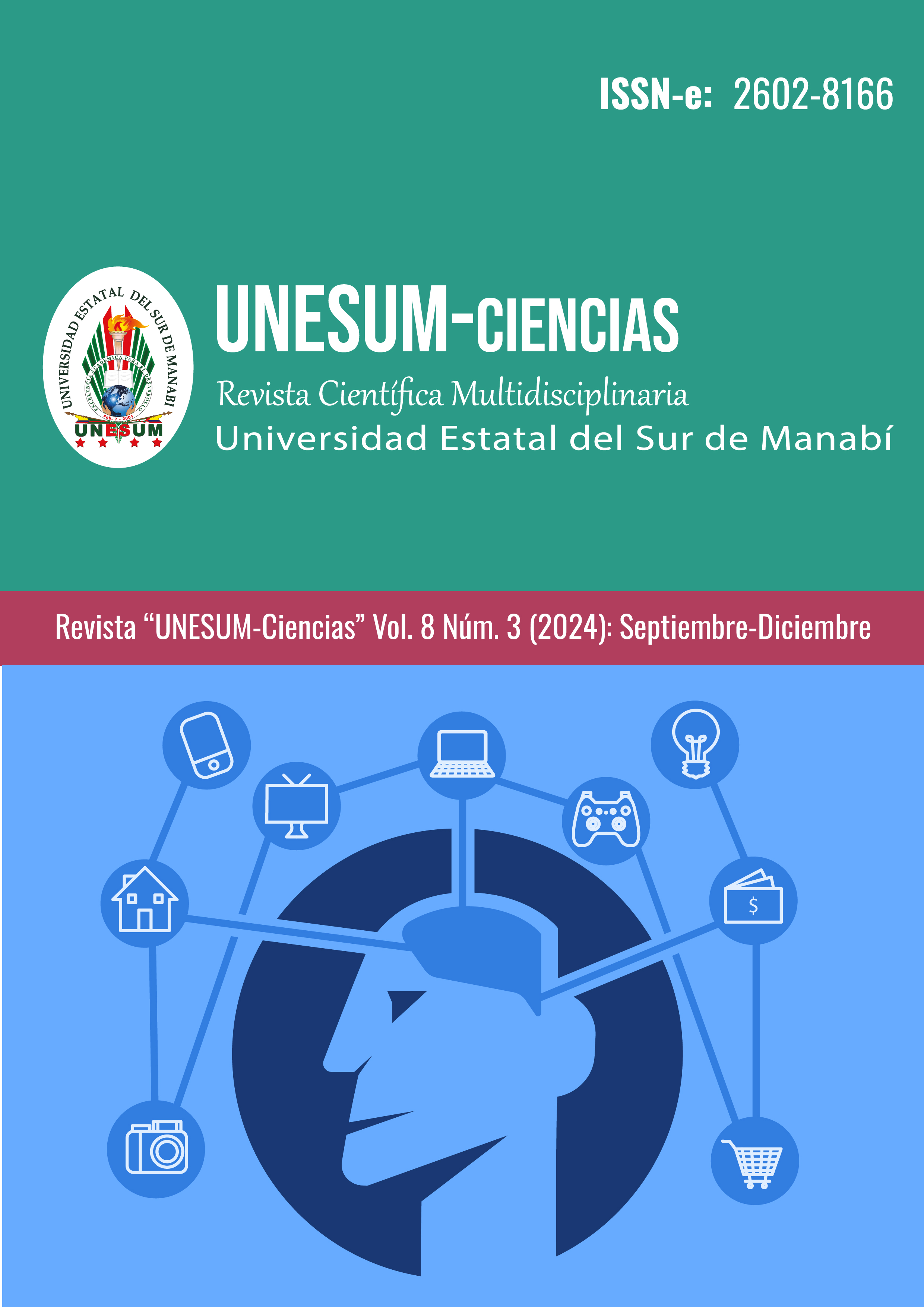Comparative analysis of pathological manifestations in social interest housing. Sí vivienda housing complex – Manta
DOI:
https://doi.org/10.47230/unesum-ciencias.v8.n3.2024.45-59Keywords:
pathological study, housing complex Si Vivienda, construction elementsAbstract
The construction of social housing, intended for vulnerable populations, often prioritizes quantity over quality, which results in the appearance of construction pathologies that compromise the safety and habitability of these buildings. In the "Si Vivienda" in Manta, the need was observed to evaluate the technical construction status of the homes and determine the possible differences between the different construction models. The general objective was to analyze the pathological manifestations in the 4 different housing models existing in the housing complex to identify which of them presented the greatest deterioration. The pathological study of 60 homes distributed uniformly in the 4 present models was carried out. The methodology presented by de Tejera and Álvarez was used to analyze the component elements of the homes and their technical construction status was classified. The results revealed that all housing typologies had a "Very Good" technical construction status. However, differences were found in the incidence of injuries between the different models; the Umiña type homes obtained a score of 98.50%, followed by the Gaviota type with 98.24%, then the Isabella type with 97.45%, and finally the Tohallí type with a percentage of 97.42%.
Downloads
References
Astorga, A., & Rivero, P. (2009). Patología de las edificaciones. Centro de Investigación en Gestión Integral de Riesgos. Obtenido de https://www.academia.edu/32328402/Patologias_en_las_edificaciones
Carballo, R. (2022). Principales lesiones en la patología constructiva. International Business School. Obtenido de https://eiposgrados.com/blog/lesiones-en-la-patologia-constructiva/
Domínguez Gutiérrez, J., & González Pajaro, A. (2015). Valoración técnica del deterioro de las edificaciones en la zona costera de Santa Fe. Arquitectura y Urbanismo, 36(1). Obtenido de http://scielo.sld.cu/scielo.php?script=sci_arttext&pid=S1815-58982015000100005
Escalera Nava, N., & Córdova Olivera, P. (2016). Déficir habitacional Cualitativo: una aproximación para el caso boliviano. Investigación & Desarrollo, 2(16). Obtenido de http://www.scielo.org.bo/scielo.php?script=sci_arttext&pid=S2518-44312016000200006#:~:text=El%20D%C3%A9ficit%20Habitacional%20Cualitativo%20hace,unidad%20habitacional%20en%20la%20cual
MIDUVI. (2024). Ministerio de Desarrollo Urbano y Vivienda. Obtenido de Déficit Habitacional Nacional: https://www.habitatyvivienda.gob.ec/deficit-habitacional-nacional/
Monjo Carrió, J., & Maldonado Ramos, L. (2001). Patología y técnicas de intervención. Madrid. Obtenido de https://oa.upm.es/45423/1/2001_patologia_MC_opt.pdf
Montes, P. E. (13 de enero de 2021). ¿Qué es una patología en la construcción? Colombia. Obtenido de https://www.echeverrimontes.com/blog/que-es-patologia-construccion#:~:text=Una%20patolog%C3%ADa%20de%20la%20construcci%C3%B3n,cambios%20en%20las%20condiciones%20contextuales
Tejera Garófalo, P., & Álvarez Rodríguez, O. (2012). Patología de las construcciones. La Habana: Félix Varela.
Universitat Politécnica de Valencia. (2021). Proceso patológico de la estructura. Obtenido de https://riunet.upv.es/bitstream/handle/10251/168129/Basset%20-%20Proceso%20patol%C3%B3gco%20de%20la%20estructura%3A%20lesones%2C%20s%C3%ADntomas%20y%20causas..pdf?sequence=1&isAllowed=y#:~:text=Las%20lesiones%20que%20pueden%20afectar,de%20su%20consistenci
UTPL. (2023). La Vivienda de Interés Social y su aporte al desarrollo de las comunidades. Obtenido de https://noticias.utpl.edu.ec/la-vivienda-de-interes-social-y-su-aporte-al-desarrollo-de-las-comunidades
Downloads
Published
How to Cite
Issue
Section
License
Copyright (c) 2024 Jacqueline Dominguez Gutiérrez, Alan Josué Pico Zambrano, Angie Melina Rivera Mendoza

This work is licensed under a Creative Commons Attribution 4.0 International License.




